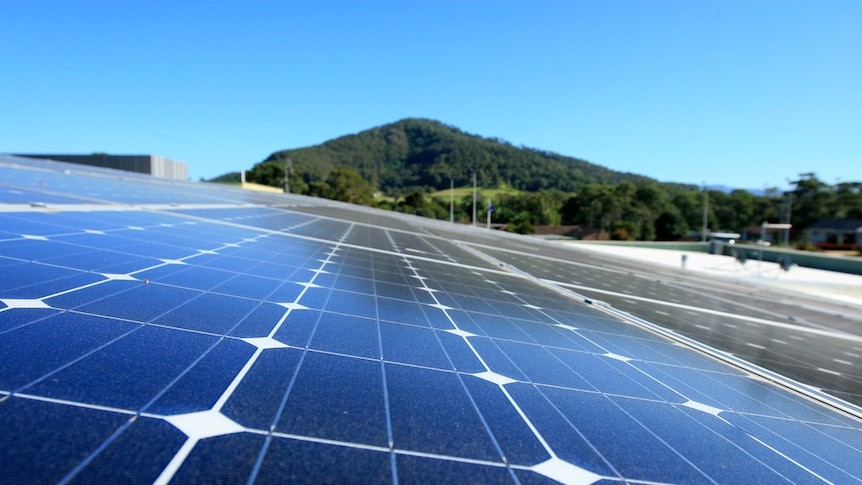Nuclear energy is more expensive than renewables, CSIRO report finds::Renewable energy provides the cheapest source of new energy for Australia, a new draft report from the CSIRO and energy market operator has found.
Just read the article again and it’s kind of suspicious the way the article ends by saying that natural gas will have to be part of the future energy mix. Seems like there might be some co-optation going on, or at least a failure to consider the costs of trying to eliminate greenhouse gas emissions from the power supply using just wind and solar.
“It’s a good technology for filling in the gaps around renewables, as well as storage and other methods for making sure that power’s still reliable…”
This does make some sense, like having a diesel generator in your home for the few times a year the power goes out. It’s also useful for shutting up the, “sometimes the wind doesn’t blow and there’s no sun at night” crowd.
Let’s not nickel-and-dime the green transition. Nuclear energy has a role to play, and so do renewables. The most urgent thing now is to get as much electricity generation off fossil fuels as possible. Building nuclear power plants is an important part of this, especially in countries like China and India which would otherwise default to burning coal.
Let’s not nickel-and-dime the green transition
Nobody is suggesting we should.
Nuclear energy has a role to play
Did you read the article? It only has a role to play if you’re into wasting money.
The most urgent thing now is to get as much electricity generation off fossil fuels as possible. Building nuclear power plants is an important part of this
Can you explain why nuclear would be a part given how long it takes to deploy in comparison to renewables? Nuclear also has a habit of being behind schedule and costing more than projected.
especially in countries like China and India which would otherwise default to burning coal.
The article is about Australia.
It really seems like people can’t get past the fact that while nuclear did have an unfair reputation, it’s just too late to make use of it.
Like yeah, it sucks that people blocked it and we built tons of fossil fuel power instead, but now we just have a better option and we can give up that fight.
There are literally countries that went all in on nuclear power (france and switzerland come to mind), that now regret that play and are trying to transition away from them. Not for safety reasons, just because they are extremely expensive to operate and they become a money pit when renewables eat away at the base load that they were built to supply. You have nuclear plants paying people to take their power during the afternoons because they cant shut down quickly when the sun comes out.
Nuclear power and cognitive dissonance. That’s why people are still touting SMRs as the future, except they cost even more than traditional nuclear. Also, they don’t exist.
Look, I’m all for renewable energy, where it makes sense. When I lived in southern California, BLM had so many wildlife restrictions in place, even for off-roading it was kinda nuts. A lot of it dealt with tortoises. Shortly after moving out of state, they started building solar farms all over the place. They’re massive multi dozens to hundreds of acres in size. Many of them in the same areas they got all worked up about for the tortoises…
Generating the power is only a third the battle. Still need to store and distribute that power. Factor in power demands etc.
What I’m trying to say is, as a species we need to get better. This is a good step. However, the power output of a single nuclear plant to the size shouldn’t be overlooked. We should stop fossil fuel reliance. Nuclear is at this point very understood. Yes some bad accidents happened in the past.
Storing energy isn’t as difficult as it’s made out to be. There’s molten salt, water pumps, boiling/heated water, discarded batteries, even hauling weights up a tall tower.
I’d like to see every building with solar panels and a backup battery to decentralize the grid.
I have a feeling this is where the suburban and rural grids are going. Dense urban areas are likely still going to need power produced off site.
What I’m more interested in will be farms in whether they’ll stay traditional producing food or convert solar farms where food production is not the main focus (see the hops farming solar panels for example).
It’s not difficult, but it is expensive and inefficient. There are very few financially viable battery technologies on the market currently, and although incremental improvements are happening on that front, there are also roadblocks (lack of raw materials like cobalt, toxic metals, thermal runaway fire risks), we really need a big breakthrough before we’ll see large adoption of batteries.
It’s worth pointing out too that we aren’t using newer designs as much, which incorporate inherently safe features.
It’s actually ironic. If we built new reactors we could build breeder tractors to generate fuel for them from nuclear waste. This fear mongering of nuclear energy prevents us from reducing that number.
They’re going with older designs for cost reasons. Per the article, you’re taking something that is already not cost effective and proposing to make it even more expensive.
deleted by creator
This is the best summary I could come up with:
The report says electricity generated by solar and on-shore wind projects is the cheapest for Australia, even when accounting for the costs of keeping the power grid reliable while they’re integrated into the system in greater proportions over time.
It estimates the changing costs of electricity produced by coal, gas, solar, wind, nuclear, bioenergy, hydrogen electrolysers, and storage such as pumped hydro and batteries.
CSIRO’s scientists say until recently, discussions about the potential cost of using nuclear energy in Australia have remained theoretical, with a lack of data from completed commercial projects hindering attempts to make worthwhile calculations.
This year’s draft GenCost report also provides more data on the estimated “integration costs” for variable renewable technologies.
It says most new-build technologies, like renewables, can enter an electricity system and provide reliable power by relying on existing capacity already deployed, but as their share increases, which forces the retirement of existing flexible capacity, the system will find it increasingly difficult to provide reliable power supply without additional investment.
"Mind you, the integrated system plan was released last week and it did emphasise that although it is likely to be a renewable future, we’ll still need gas as a supporting technology.
The original article contains 754 words, the summary contains 199 words. Saved 74%. I’m a bot and I’m open source!
Okay, but which power sources divert the most wealth to the working class (ie, which one provides more higher paying long term jobs)?
Despite what you learned from The Simpsons, jobs at powerplants of any kind make up an insignificant percentage of overall jobs and wouldn’t be an issue raised when considering much larger issues such as economies, environmental health, and the climate.
You may be confusing power generation with power infrastructure. Infrastructure has many more jobs but is generally not too concerned about the source so long as there.is power.
I was thinking of all the manhours needed to engineer and build a nuclear power plant (and all of its subcomponents) in the first place as well as maintenance and refueling.





